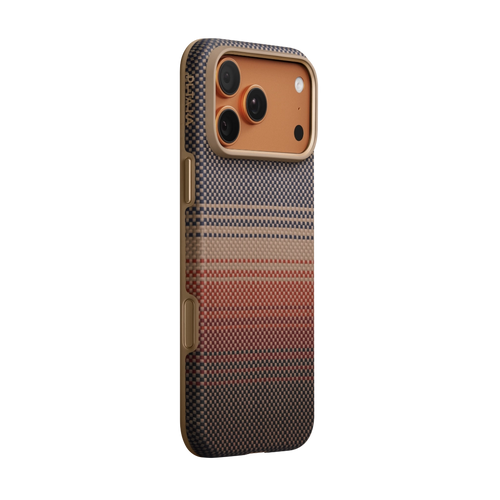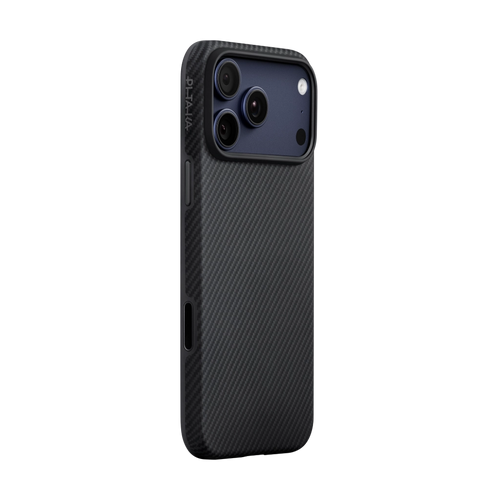There are many materials used to make phone cases, from simple ones such as plastic, and synthetic leather to more exotic materials such as real leather, carbon fiber, or aramid fiber. Some will provide better protection in the event of a fall, while others are scratch-resistant.

So, what is the best material for phone cases?
Let’s go through each one and get a better understanding of their strengths and weaknesses.
1. Different Types of Phone Case Materials
1) Plastic phone cases

Plastic is one of the most common materials used in phone cases. It’s cheap, lightweight, and comes in endless colors and styles.
There are two main types: hard plastic (like polycarbonate) and soft plastic (like TPU). Hard plastic cases protect against scratches but can crack if dropped. Soft plastic cases are more flexible and absorb shock better, but they can turn yellow over time.
Pros:
- ✔ More affordable
- ✔ Grip
- ✔ Easy to customize or decorate
- ✔ Offers basic, limited protection
- ✔ Lightweight
- ✔ Waterproof
Cons:
- ✔ Looks cheap
- ✔ Not sustainable
- ✔ Discolors due to exposure to sunlight
2) Leather and synthetic phone cases

Leather cases give a classy, professional look. They feel soft and get better with age, but they're not the best at protecting against big drops.
Synthetic leather cases are cheaper and more durable, but they don’t have the same premium feel. If you like stylish and formal cases, leather is a good choice.
Pros
- ✔ Comfortable
- ✔ Stylish and elegant
- ✔ Grip
Cons
- ✔ Offers limited protection if you drop the phone
- ✔ Expensive if it’s real leather
- ✔ Hard to identify animal skin from synthetic leather
3) Silicone phone cases

Silicone cases are soft, grippy, and easy to hold. They absorb impact well, making them great for drop protection.
The downside? They attract dust and lint easily, which can make them look dirty over time.
Still, if you want a case that won't slip out of your hands, silicone is a solid option.
Pros
- ✔ Affordable
- ✔ Comes in a variety of styles and colors
- ✔ Grip
Cons
- ✔ May appear cheap and unattractive
- ✔ Not easy to clean
- ✔ Gets dirty really easily
- ✔ Difficult to slip in or out of pockets
4) Carbon fiber phone cases

Carbon fiber has high stiffness, high tensile strength, low weight, high chemical resistance, high-temperature tolerance and low thermal expansion. It is usually used in the aircraft and aerospace, wind energy, as well as the automotive industry with optimized resin systems.
If you are looking for a case that has a futuristic look and is stronger than steel but weighs next to nothing, carbon fiber could be a good choice. Most carbon fiber cases have black twilled patterns that look modern and stylish. However, carbon fiber can sometimes interfere with signal strength, which is a big downside.
Pros
- ✔ Durable
- ✔ Very lightweight
- ✔ Attractive
Cons
- ✔ The most expensive compared to the other materials
- ✔ Comes in a limited variety of patterns or colors
- ✔ Can affect the phone signal
5) Wood phone cases

You can also find cases made from wood, although they tend not to be as popular as the other ones.
Wood phone cases are unique and eco-friendly. They feel smooth and stylish, but not the best for heavy protection. Some wood cases mix with other materials, like rubber or plastic, to add extra durability.
Pros
- ✔ More sustainable than plastic
- ✔ Attractive
- ✔ Highly customizable
- ✔ Easy to grip and hold
Cons
- ✔ Not so protective
- ✔ Not widely available
- ✔ May be expensive
6) Metal phone cases

What about the metal? Aluminum is probably the most commonly used metal in phone cases, although you can find ones made from titanium, brass, or even precious metals like gold. Metal cases can protect your phone from falls and scratches.
But here's the catch: metal phone cases tend to be heavier than other materials, and can affect the wireless charging capabilities of a phone due to its magnetic shielding properties.
Pros
- ✔ Durable. Can protect your phone from drops
- ✔ Modern and sleek-looking
Cons
- ✔ Blocks cell phone signal
- ✔ More expensive than other types of cases
- ✔ Can be slippery and difficult to hold
2. Comparing phone case materials
For most users, material choice is primarily influenced by the look, where to use it, the ease of use, price, and protection.
So how well do our materials perform?
1) Protection from impact and scratches
To some extent, this is the biggest reason why we want a case, because most modern smartphones available today are made from fragile materials such as glass, and they aren’t strong enough to withstand a drop from the pocket to the floor. A case could help reduce the impact and chance of scratches on your precious investment.
So how can our material selection help when it comes to protection?
Check the recommended ratings below:
| Materials | Score |
|---|---|
| Plastic | ★★ |
| Leather and synthetic | ★★★ |
| Silicone | ★★★ |
| Carbon fiber | ★★★★★ |
| Wood | ★★★★ |
| Metal | ★★★★ |
2) The look
As we previously discussed, in this part, carbon fiber, wood, and metal typically have good ratings when it comes to their look. They never go out of style and tend to be more aesthetically pleasing.
| Materials | Score |
|---|---|
| Plastic | ★★ |
| Leather and synthetic | ★★★ |
| Silicone | ★★ |
| Carbon fiber | ★★★★ |
| Wood | ★★★★ |
| Metal | ★★★★ |
3) Ease of use
What does it mean? These questions could explain this particular attribute: Does it feel good in the hand? Is it easy to grip and hold? Does it make your phone bulky? Is it easy to clean? The list could go on and on.
| Materials | Score |
|---|---|
| Plastic | ★★ |
| Leather and synthetic | ★★★ |
| Silicone | ★★★ |
| Carbon fiber | ★★★★ |
| Wood | ★★★ |
| Metal | ★★★ |
4) Eco-Friendly
Eco-friendly is all about how sustainable the materials are and whether they are maximized to mitigate their impact on the environment.
| Materials | Score |
|---|---|
| Plastic | ★★ |
| Leather and synthetic | ★★★ |
| Silicone | ★★ |
| Carbon fiber | ★★★ |
| Wood | ★★★★★ |
| Metal | ★★★ |
5) Cost
This is probably the last thing you will consider before you place your order. Obviously, plastic beats other materials, as it's the most economical of all.
| Materials | Score |
|---|---|
| Plastic | ★★★★★ |
| Leather and synthetic | ★★★ |
| Silicone | ★★★★ |
| Carbon fiber | ★★ |
| Wood | ★★★ |
| Metal | ★★★ |
Each material has its strengths and weaknesses; though none of them offer a complete all-around set of strengths or be specific, they are not so good as to justify selecting one of them as your phone case.
Why? Well, I believe that the best material for making phone cases must meet two fundamental requirements: durability and lightness.
3. Aramid fiber could be the best phone case material
Aramid fiber is a futuristic material, five times stronger than steel but five times lighter, with excellent heat resistance. It's commonly used in Aerospace, Racing Vehicles, and Body Armor. It is often confused with carbon fiber because they look similar.
However, unlike carbon fiber cases that may block your phone signals dramatically, aramid fiber cases don't mess with your phone’s signal.
Best brand of aramid fiber phone cases
When it comes to aramid fiber phone cases, PITAKA is a leading name. Since 2015, PITAKA has specialized in crafting high-quality aramid fiber cases, bringing nearly a decade of expertise to the market and having developed several types of aramid fiber cases to meet different demands.

Ultra-Slim Cases
If you like thin and lightweight cases, these are perfect. They protect against scratches and keep your phone looking sleek. The classic black/gray weave started it all, but now they also come in fresh colors like Iceberg Blue and Forest Green.
Tactile Woven Cases
PITAKA was the first to develop Fusion Weaving technology, which blends different colors into one case. These cases don't just look great—they feel great, too! The most iconic designs, like Sunset Moonrise and StarPeak, are inspired by nature, turning your phone into a little piece of art.
In 2024, PITAKA also introduced Lumintex™ fiber, a material that glows in the dark. Plus, there's the classic monogram series, where the letters "PTK" are woven into the design for a stylish and elegant look.
Military-Grade Protective Cases
If you need extra protection, PITAKA Military-Grade Protective cases combine aramid fiber with TPU for full coverage. They're built to absorb shock, making them great for anyone who drops their phone often. You don't have to sacrifice toughness for style!
PinButton Case
This one is for people who love shortcuts. The PinButton case has three NFC buttons that you can set up to open your favorite apps instantly. No more scrolling through menus—just press a button to start recording, turn on your flashlight, or play music. It's simple, fast, and convenient.
















